Oscar winner Halle Berry and author Toni Morrison among Ohio’s most inspiring women
Let us just say, for starters, that Ohio is way ahead of the pack. When asked this year to select a slate of outstanding women from the state to help salute the 100th anniversary of women winning the vote, the line had already been forming since 1978.
That’s the year that the Ohio Women’s Hall of Fame was founded and women of note honored for their contributions, both to the state and to the nation.
As of today, there are 356 women in the hall. The assignment from the USA TODAY Network, however, was to choose the 10 most worthy as Women of the Century. The women were expected to have a track record showing outstanding achievement areas such as arts and literature, business, civil rights, education, entertainment, law, media, nonprofits and philanthropy, politics, science and medicine or sports. Other requirements included U.S. citizenship and having lived between 1920 and 2020.
These are tall orders. It would need a concerted effort by a select panel that included a former Ohio Supreme Court justice, a state historian, academicians from two major Ohio universities, one young Toledo librarian, a Cincinnati author and two journalists.
How, exactly, the panel wondered, do you pick just 10? Was an adventurer more admirable than an actress? Was a little-known name less important because her work was not headline-gathering at the time? Were historical figures to be judged on their courage? Or dismissed because of their obvious flaws, given 21st century standards?
Are you registered to vote? Take the first step to making sure your vote counts.
But the panel agreed; Ohio is as gifted as any state in its quantity of female grit. The list reflects that. It is equally gifted in pluck and humor and brains. That some of those chosen made their names in other places, other states only goes to show that Ohio nurtured things that other states had to import. And that Ohio, while being sometimes the place where people “are from,” it is also the place where none of that grit or pluck or humor or brains was quashed. It is where it bloomed.
Gloria Steinem, for example, was born in Toledo. Astronaut Judith Resnick was from Akron. Poet Nikki Giovanni hails from Cincinnati.
As important as it is for readers to examine and, yes, criticize the list, given all kinds of individual criteria, it is important to know that lots of women were on the almost-made-it list. Like Annie Oakley, the sharpshooter who lived long enough to vote, and who shined in a world completely dominated by men. Or Laurette Schimmoler, the country’s first flight nurse. Or Doris Day who was, you know, Doris Day.
But the final list, we hope, reflects the state, its century and its women, who built, strengthened and saved this country as surely as any man.
Who is your Woman of the Century? Did we miss a woman you think should be on our list? We’d like to hear from you.
Florence Allen
First woman appointed and confirmed to a federal appeals court judgeship
(1884-1966)
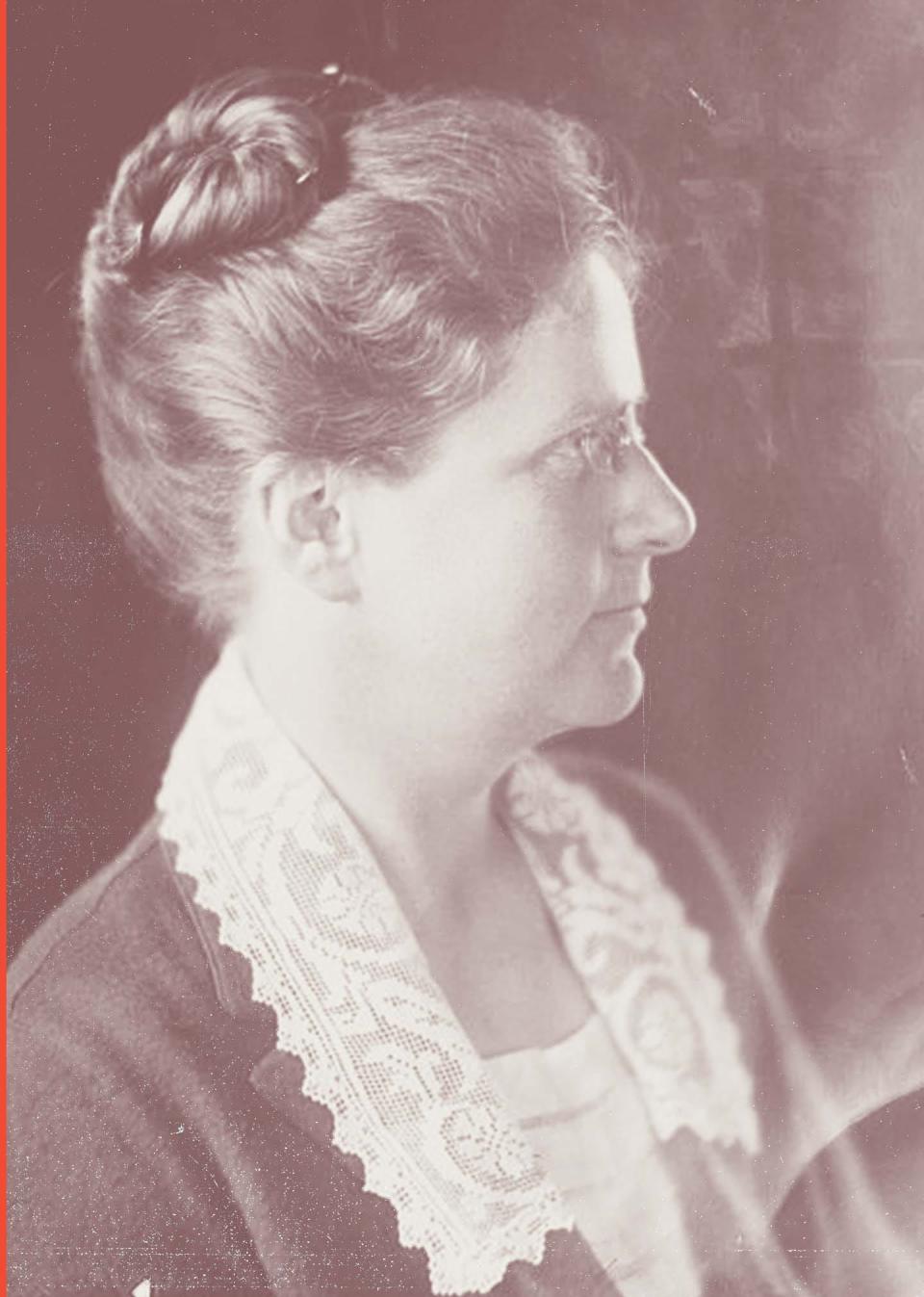
In 1919, a year before women got the vote throughout the country, Florence Allen was already an assistant prosecutor in Cuyahoga County (Cleveland), Ohio, a first for any woman in the land. Not long after, she decided she wanted to be a county judge. But because she could not vote, neither could she campaign for the office. That is, until the 19th Amendment was passed, 10 weeks before the election. With an army of supporters, Allen got enough signatures to earn her a place on the ballot. She won in a landslide.
“If I make good,” she was quoted saying, “I can help prove that a woman’s place is as much on the bench, in City Council, or in Congress, as in the home.”
She was just getting started.
On Nov. 7, 1922, Allen was elected Justice of the Supreme Court of Ohio, the first woman elected to the highest court in any state. She wrote the majority opinion on the groundbreaking decision that gave employees the right to sue employers for injuries sustained while operating dangerous equipment.
In 1934, Justice Allen became the first woman appointed and confirmed to a federal appeals court judgeship. She served six six-year terms.
Halle Berry
First woman of African descent to win an Oscar for best actress
(1966- )
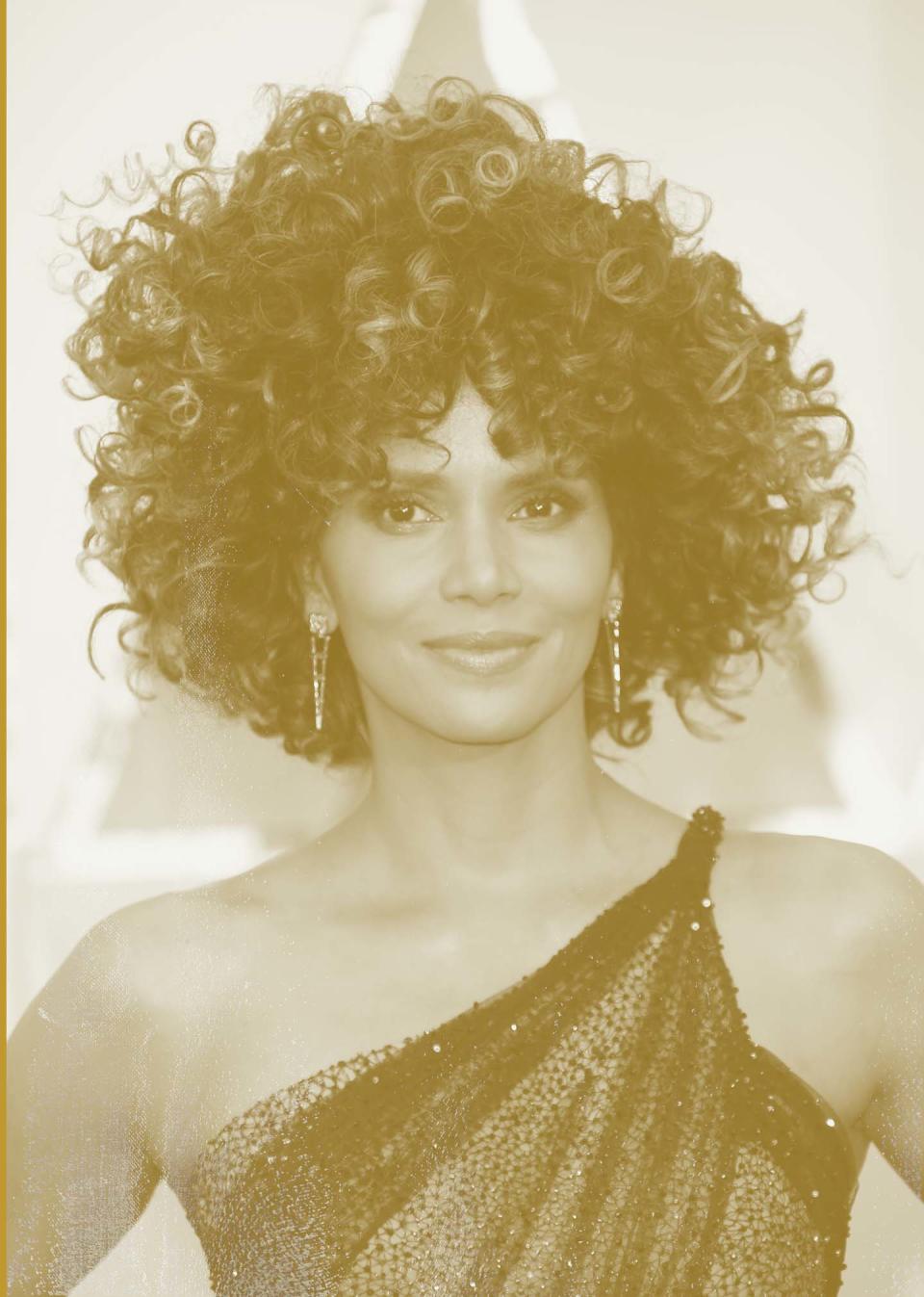
In 2001, Halle Berry became the first woman of African descent to win an Oscar for Best Actress, for her performance in the film “Monster’s Ball.”
Berry was born in inner-city Cleveland and named after a landmark department store in the city’s downtown. Abandoned at a young age by her alcoholic father and raised by her single mother, Berry found a way to succeed in a world that did not embrace the biracial child who, she would often say, did not feel she belonged anywhere.
Using her gift of beauty and her hard-fought fortitude, she took her Miss Ohio USA 1986 crown and a sixth place Miss World 1986 to New York, where she struggled, even sleeping at one point in shelters, until she found work in a TV spinoff, advancing quickly to feature films. By the early 2000s, having already been a Bond girl, she went on to be one of the highest paid actresses in the country and is now producing several of her own films.
She has been active in raising awareness about women’s causes, environmental concerns and the right of celebrities to raise their children free from media harassment.
Berry told a crowd in Atlantic City in 2019, where she is making her directorial debut: “My whole life has been about fighting. Being a woman of color, I have never had an easy path. I’ve always had to make a way out of no way. … When I tell you that it’s hard — and it’s going to be hard — that doesn’t mean you can’t do it.”
Erma Bombeck
Author and columnist
(1927-1996)

She was not the anti-Betty Friedan, but homemaker and mother Erma Bombeck often told how she got her first $3 per column gig writing about the inherent humor in suburban housewife life after hearing feminist Friedan speak about its horrors.
The writer, who had been a copy girl at her local paper at 15, soon moved to the Dayton Journal-Herald for the outrageous sum of $50 per column. The following for her eloquent and always incisive work soon grew though, such that by the mid-1980s, her syndicated work ran three times a week in 900 U.S. newspapers. She famously referred to herself as “a former homeroom mother and obituary writer.” Her children famously told people that they didn’t really read her much.
The mother of three soon added books (ultimately, she wrote nine best sellers) and 11 years on national morning television to her repertoire, always finding something important to say about meatloaf, ironing and carpools but also, though less frequently and more obtusely perhaps, about social inequality and women’s rights. Her ease and comfort with the changing attitudes and career options for women, midcentury, did much to make them acceptable, even embraced. That she delivered so much of her opinion and insight with humor and self-deprecation seemed to make the medicine made palatable.
Her outspoken advocacy of the Equal Rights Amendment in the late 1970s also appealed to a large swath of women who did not think of themselves as political.
Ruby Dee
Actress and civil rights advocate
(1922-2014)
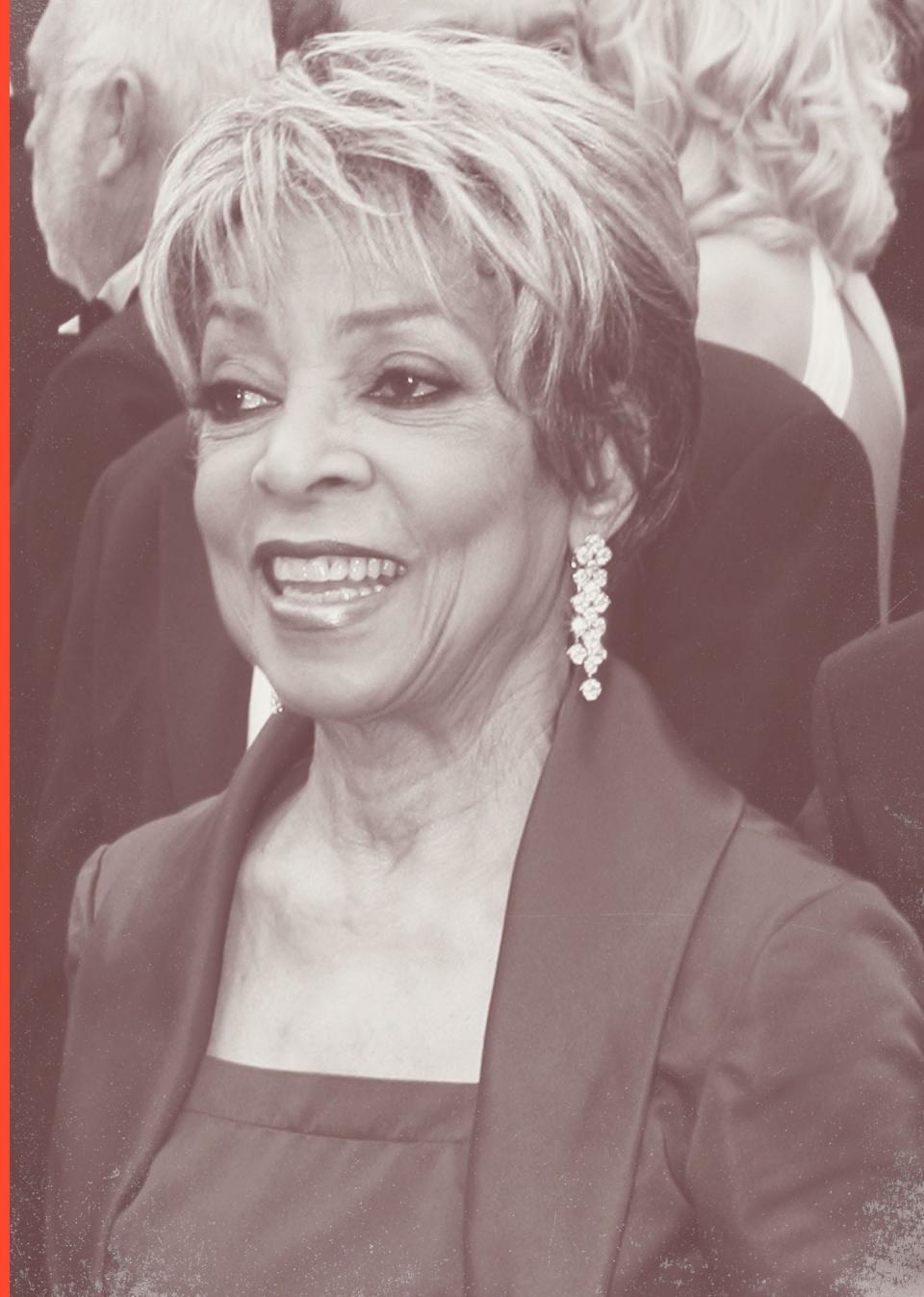
Born in Cleveland, the professional career of Ruby Dee flourished for seven decades, dominating the stage and screen in roles designed for Black women in the 1950s and ‘60s. She originated the role of Ruth Younger on stage in “A Raisin in the Sun,” reprising it in the film of the same name a few years later.
Dee continued to pursue roles that defied the stereotypes that Hollywood and Broadway had been comfortable with. She was equally at home performing the work of Athol Fugard and Eugene O’Neill. In 1965, Dee became the first Black actress to perform lead roles at the American Shakespeare Festival in Stratford, Connecticut. She continued to rule the stage and screen even as she publicly and vocally fought for civil rights legislation and action in a volatile country.
She and Ossie Davis, her husband of 56 years and with whom she worked often until his death, purposefully and actively lived their values. She defended Julius and Ethel Rosenberg in 1953, stood next to Martin Luther King Jr. at the 1963 March on Washington, protested the Vietnam War and shared a close relationship with Malcolm X, eventually eulogizing him at his funeral. She was a member of the Congress of Racial Equality, the NAACP, The Student Nonviolent Coordinating Committee and the Southern Christian Leadership Conference.
She and Davis were dually honored by the Kennedy Center in 2004. Of the pair, it was said they opened “many a door previously shut tight to African American artists and planted the seed for the flowering of America’s multicultural humanity.”
Dee was nominated for an Academy Award for her role as the mother of a drug kingpin in 2007’s “American Gangster.”
“We women,” she once said, “have a great function to perform. The world needs us.”
Agnes Meyer Driscoll
Navy code breaker
(1889-1971)
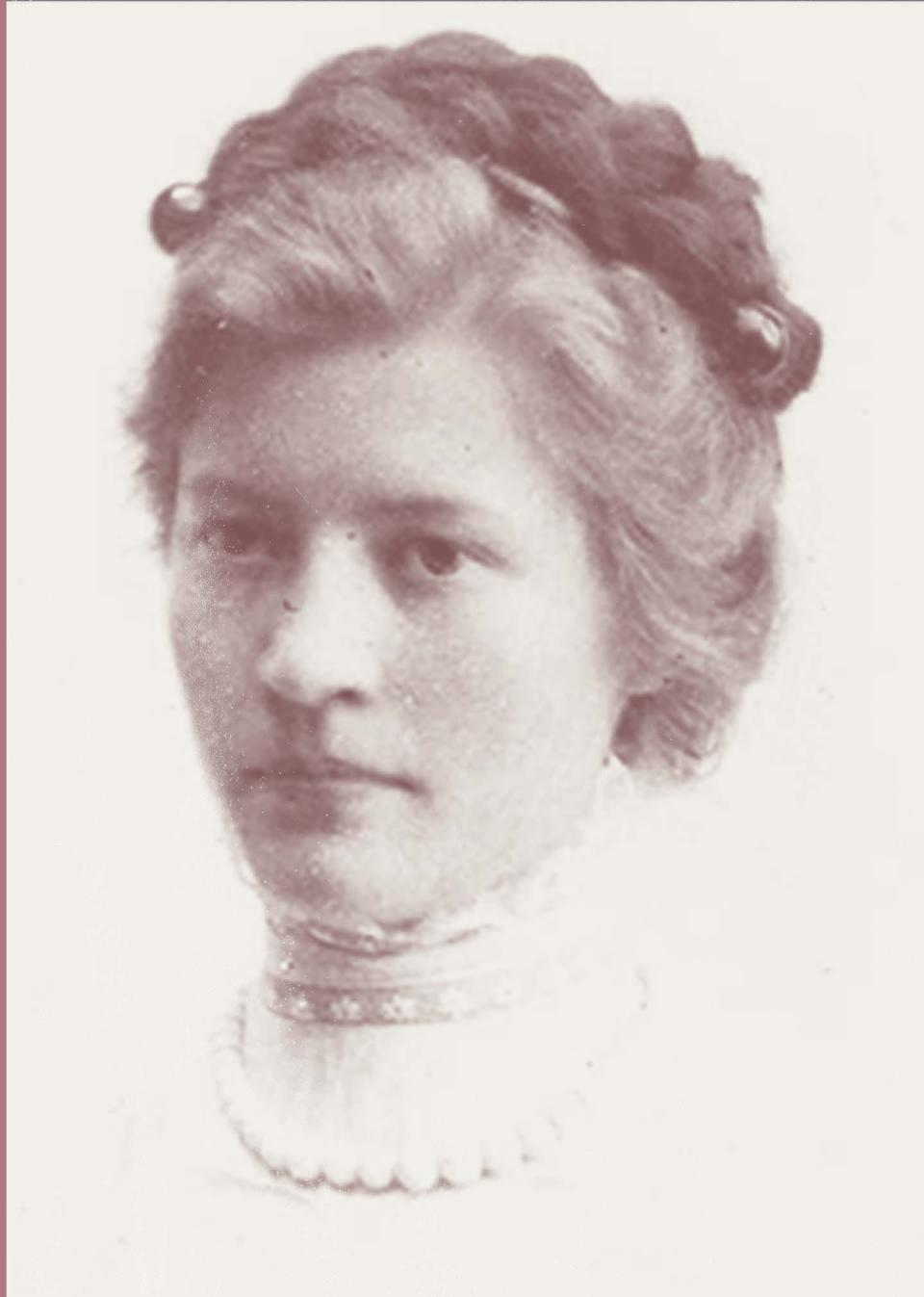
In her 30-year career as a Navy code breaker, Agnes Meyer Driscoll’s ability to work through complex enemy code shortened the two major wars of the 20th century and saved thousands of American lives in the process.
Although hired as a stenographer, Driscoll eventually became the Navy’s primary cryptographer responsible for cracking Japanese Navy manual codes, including the Red Book Code in the 1920s, the Blue Book Code in 1930, and the Japanese fleet's operational code in the early 1940s. That last breakthrough enabled U. S. forces to mount the Battle of Midway and effectively dismantle much of Japanese naval warfare for the rest of the Pacific War.
She did early work on solving the German Enigma machine, before that was handed over to the British.
The Ohio State University graduate, class of ’11, used everything she had learned there – she majored in math, physics and foreign language -- to further the discipline of cryptoanalysis until 1949.
She is famously quoted as saying that “any man-made code could be broken by a woman.”
She was inducted into the National Security Agency Hall of Fame in 2000.
Maya Lin
Designer and architect
(1959- )
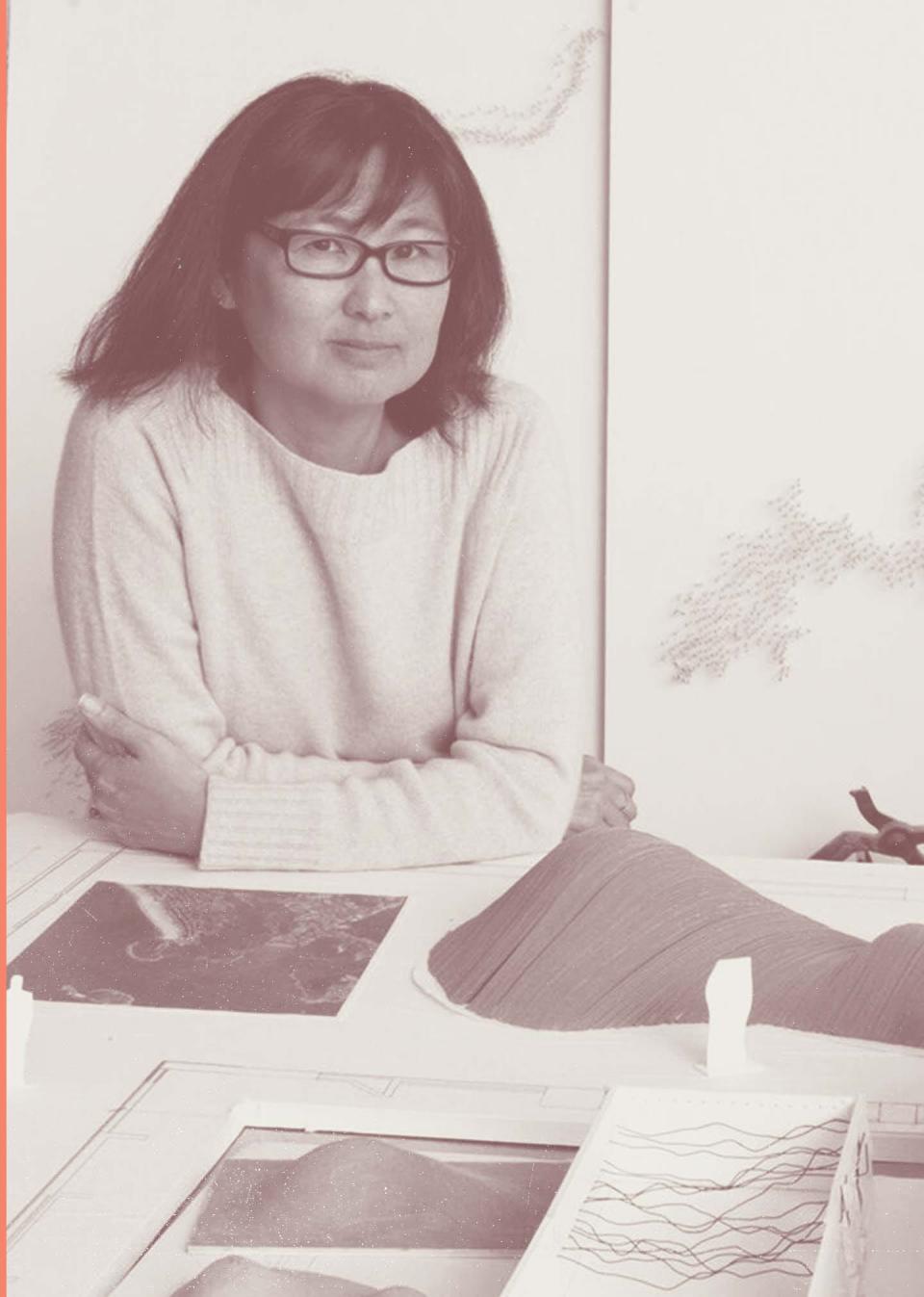
The daughter of an artist and a poet who both fled China in 1938, Maya Lin was born in the university town of Athens. While just 21 and still a Yale undergraduate, she submitted her breathtaking and groundbreaking design for the Vietnam Veterans Memorial in 1980.
Her idea, of two granite walls, angled and dropping below ground level, is engraved with a chronological list of the dead and missing from that war. Of the internationally recognized memorial now known simply as The Wall, she has said, “I really did mean for people to cry.”
Historians of American architecture agree that Lin’s iconic work has influenced every major memorial erected in the U.S. since.
She is also known for designing the Women’s Table at Yale, which chronicles the number of women at the college from 1701 until 1992, when female enrollment finally equaled male enrollment. She also designed the Civil Right Memorial in Montgomery, Alabama. For what she has said is to be her last memorial design, she has created a series of interrelated sculptures to animal species made extinct or threatened by the actions of humans and the effects of climate change.
Geraldine “Jerrie” Mock
First woman to fly solo around the world
(1925-2014)
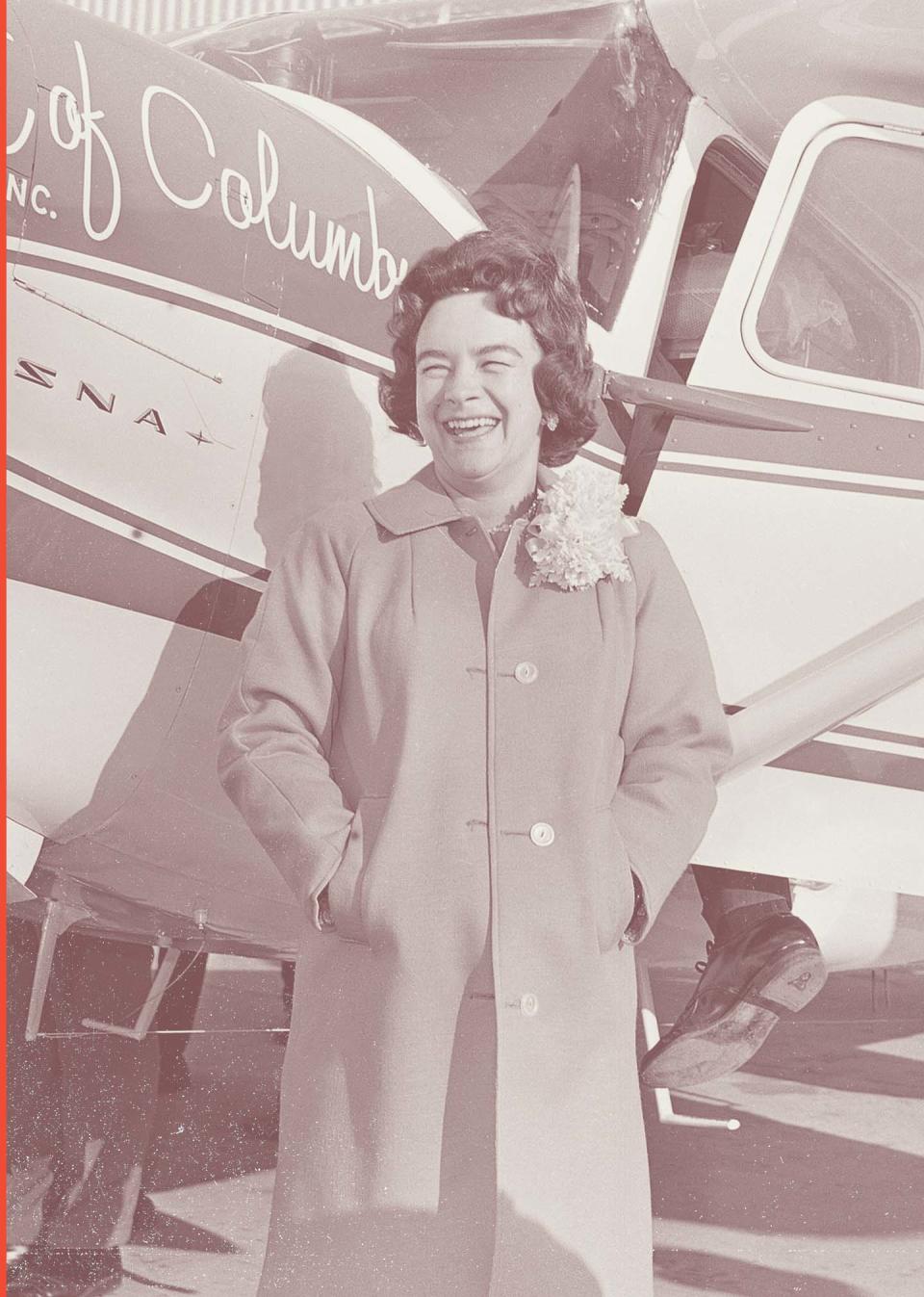
The self-styled ‘flying housewife’ from Columbus, Jerrie Mock was the first woman to fly solo around the world, completing the voyage that Amelia Earhart, her hero, did not finish. The 22,860-mile trip took 29 days. She made 21 stopovers.
The year was 1965. Mock famously wore a knit skirt, sweater and leather shoes for the journey in her Cessna 180 dubbed “The Spirit of Columbus.” The planning had been intense. There were countries that did not want her to land on their shores and embassies to work around. She told a magazine once that those were the hard parts, “the flying was easy.” In 1966, she few from Honolulu to Columbus, setting another record, this one for the longest nonstop flight by a woman. Before the end of the decade, she had set at least a dozen such marks.
Mock’s plane now hangs in the Steven F. Udvar-Hazy Center at Dulles International Airport. It is a part of the Smithsonian National Air and Space Museum.
Toni Morrison
First Black woman of any nationality to win a Nobel Prize in Literature
(1931-2019)
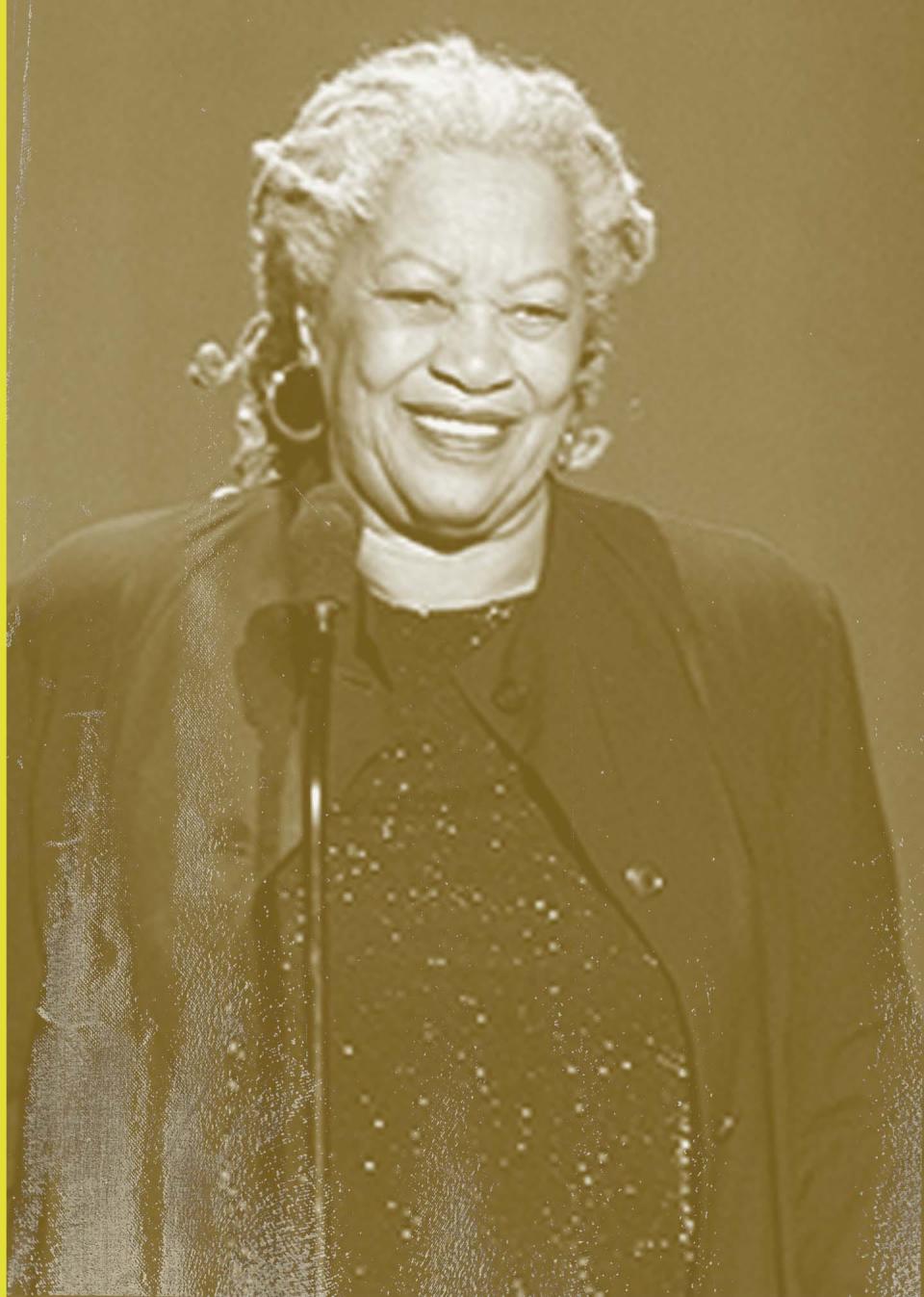
The first Black woman of any nationality to win a Nobel Prize in Literature, Toni Morrison authored 11 novels (as well as many other essays, children’s books and lectures) that explored, explained and illuminated what it is to be Black and a woman in America.
The small-town girl from Lorain, was, she said, at best, a storyteller, one who took much from the oral tradition of the rich culture found throughout Black America.
While notable for bringing many works from Black authors, including Muhammed Ali, to print as the first Black female editor at Random House, her own prose, beginning with “The Bluest Eye” in 1970, far outshone any that she shepherded. Her most celebrated work, “Beloved,” won her the Pulitzer Prize for Fiction in 1988 and was included in her 1993 citation for winning the Nobel Prize in Literature.
There are hardly any writing awards she has not earned. Her continued devotion to teaching reflected her lifelong struggle to lift others up.
She often told her students: “If you have some power, then your job is to empower somebody else.”
Muriel Siebert
First woman to become a member of the New York Stock Exchange
(1928-2013)

Also known as Mickie, Muriel Siebert, a daughter of Cleveland, visited the Next York Stock Exchange as a young girl and told everyone she knew she'd work there someday.
She would do far more than that. Siebert became the first woman to become a member of the New York Stock Exchange, and the first woman to become the superintendent of banking for New York State.
She had started work on Wall Street as a stock researcher, having fudged her university credentials. (She hadn't graduated.) She quickly got the hang of it but soon realized she was not paid as much as men who did the same job. She changed jobs three times before, in the mid '60s, she decided she would fix this inequity – for herself and other women would come later – by buying a seat on the New York Stock Exchange.
That would cost almost a half-million dollars, with most coming from a lending bank. She raised the money, found herself a sponsor and got the loan. On Dec. 28, 1967, Siebert took her place on the New York Stock Exchange, the only female surrounded by 1,365 men.
"In some cases," she was quoted saying, "being a woman was an obstacle, but it probably gave me more incentives that I would have had if I’d been a man."
In 1969, the Muriel Siebert & Company was formed. She went on to become the state's first female superintendent of banking, the director of New York City’s Municipal Credit Union, Urban Development Corporation, and Job Development Authority. She funded many financial literacy programs directed specifically at women.
After her death in 2013, the New York Stock Exchange honored her by naming a room after her, something never done before for anyone, male or female.
Katie Smith
Basketball player and coach
(1974- )
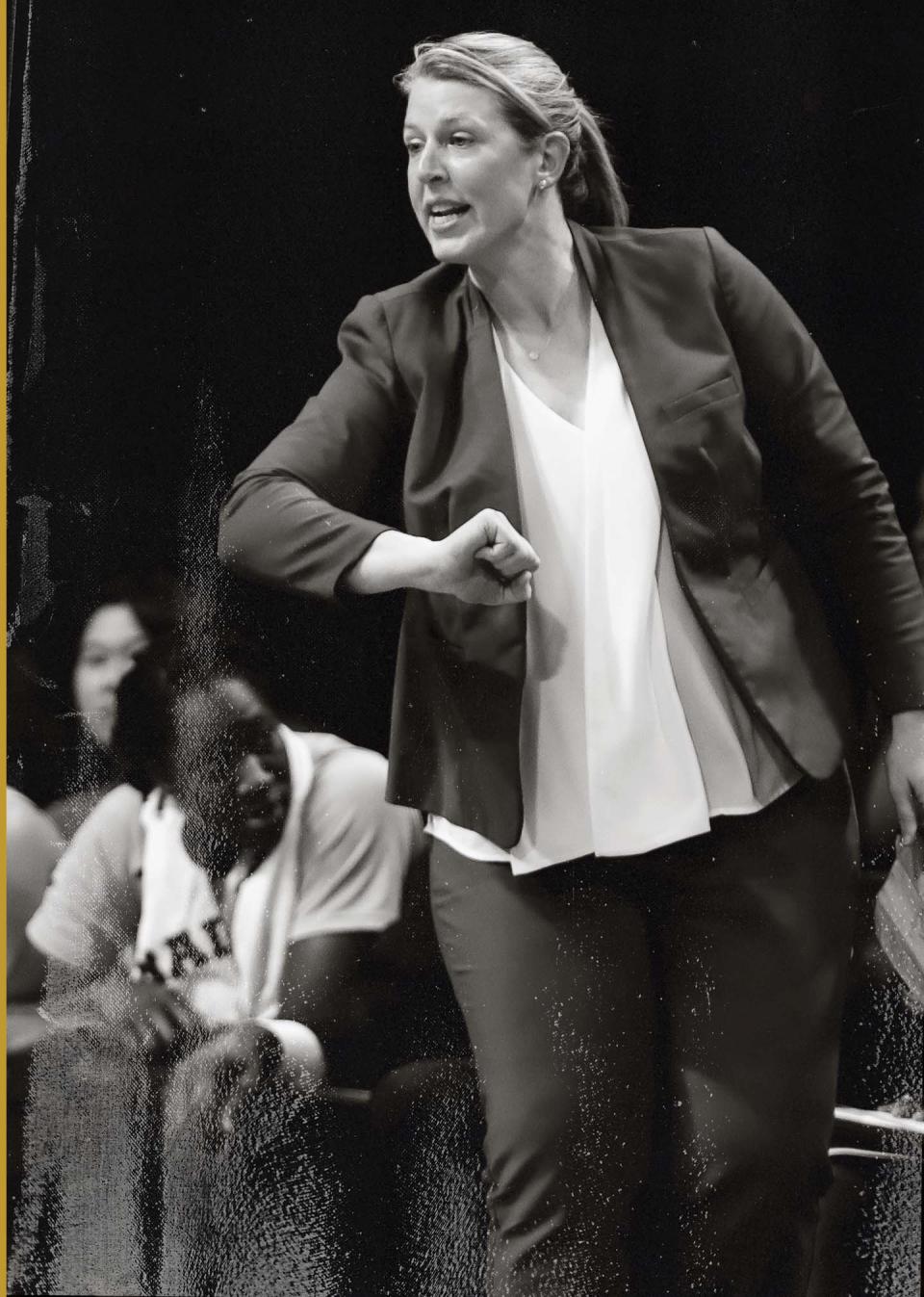
In 2005, Katie Smith became the first American female basketball player to score 5,000 points in her professional career. Two years later, she was the first to score 6,000. The Women’s Basketball Association has honored her as one of the top 20 players of its first 20 years in existence.
Smith’s athletic prowess was obvious early in her small hometown of Logan, Ohio, when she found her way in fifth grade as the only girl on the boys’ team. By the time she was a senior at Logan High School, she was named Gatorade National Player of the Year, an all-American and a member of the state championship team.
As a freshman at Ohio State University, she helped lead the team to a national championship. In 2004, she was a shooting guard on the national team that won an Olympic gold medal.
In 2008, Smith was named the Most Valuable Player of the WNBA finals. She is a former head coach of the New York Liberty and current lead assistant coach for the Minnesota Lynx.
In 2018, the 5 foot 11 Smith was officially inducted into the Naismith Memorial Basketball Hall of Fame, where she joked about her years growing up, “I was always shirts when the game was shirts and skins.”
More coverage
Women of the Century: They didn’t succeed despite adversity, but often because of it
50 states: Learn about notable women from every state
Who is your Woman of the Century?: Let us know
Recognizing women past and present: See all of our coverage
Special thanks to Yvette McGee Brown, practicing attorney and former justice, Ohio Supreme Court; Renee Sentilles, professor of American women's history, gender and sexuality, Case Western Reserve University; Stephanie Shaw, professor of women's and African-American studies, Ohio State University; Rebecca Stanwick, librarian, head of the Steinem Sisters Collection, Toledo-Lucas County Library; Jeff Suess, author of "Los Cincinnati," "History of Cincinnati" and "Cincinnati: Then and Now"; Amy Wilson, storytelling coach, Cincinnati Enquirer; Megan Wood, director of cultural resources, The Ohio History Connection; and Holly Zachariah, metro reporter, The Columbus Dispatch.
Sources used in the Women of the Century list project include newspaper articles, state archives, historical websites, encyclopedias and other resources.
This article originally appeared on USA TODAY: Women of the Century Ohio list includes actresses, Nobel Prize winner

